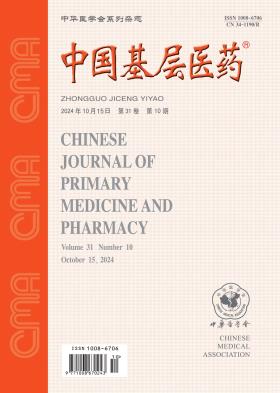大骨瓣开颅治疗急性颅脑损伤的疗效及对患者应激反应的影响
引用次数: 0
摘要
目的探讨大骨瓣开颅术治疗急性颅脑损伤的疗效及其对应激反应的影响。方法选取2015年1月~ 2018年12月收治的80例急性颅脑外伤患者,采用随机数字表法随机分为对照组(40例)和观察组(40例)。对照组采用常规开颅减压治疗,观察组采用大骨瓣开颅治疗。比较两组患者治疗前和治疗后2周6个月颅内压、格拉斯哥昏迷指数(GCS评分)、应激反应指数、预后及并发症的变化。结果治疗2周后,观察组颅内压[(8.48±2.10)mmHg]低于对照组[(11.86±1.74)mmHg], GCS评分[(10.35±1.87)分]高于对照组[(7.69±1.15)分](t=19.434、7.663,P均<0.05)。治疗2周后,观察组患者血清ACTH[(35.19±5.46)mg/L]、皮质醇[(17.41±4.56)mg/L]水平低于对照组[(48.91±4.95)mg/L和(28.93±7.48)mg/L] (t=11.774、8.317,P均<0.05)。治疗6个月后,观察组患者预后(60.00%)优于对照组(32.50%)(χ2=6.084, P<0.05)。观察组并发症发生率(5.00%)低于对照组(22.50%)(χ2=5.165, P<0.05)。结论大骨瓣开颅术治疗急性颅脑损伤疗效好,且能减轻应激反应,并发症少,值得临床参考。关键词:开颅术;减压手术;颅脑外伤;颅内压;格拉斯哥昏迷指数;应激反应本文章由计算机程序翻译,如有差异,请以英文原文为准。
Observation on the effect of craniotomy with large bone flaps on acute craniocerebral trauma and its influence on stress response of patients
Objective
To investigate the effect of large bone flap craniotomy on acute craniocerebral trauma and its influence on stress response.
Methods
From January 2015 to December 2018, 80 patients with acute craniocerebral trauma were randomly divided into control group (40 cases) and observation group (40 cases) by random number table method.The patients in the control group were treated with conventional craniotomy and decompression, while the patients in the observation group were treated with craniotomy with large bone flaps.The changes of intracranial pressure, Glasgow coma index (GCS score), stress response index, prognosis and complications after 6 months were compared between the two groups before treatment and 2 weeks after treatment.
Results
Two weeks after treatment, the intracranial pressure in the observation group [(8.48±2.10)mmHg] was lower than that in the control group [(11.86±1.74) mmHg], while the GCS score[(10.35±1.87)points] was higher than that in the control group [(7.69±1.15)points](t=19.434, 7.663, all P<0.05). Two weeks after treatment, the serum levels of ACTH [(35.19±5.46)mg/L] and cortisol [(17.41±4.56)mg/L] in the observation group were lower than those in the control group [(48.91±4.95)mg/L and (28.93±7.48)mg/L] (t=11.774, 8.317, all P<0.05). Six months after treatment, the prognosis of the observation group(60.00%) was better than that of the control group (32.50%) (χ2=6.084, P<0.05). The incidence of complications of the observation group (5.00%) was lower than that of the control group (22.50%) (χ2=5.165, P<0.05).
Conclusion
Craniotomy with large bone flaps has good effect in the treatment of patients with acute craniocerebral trauma, and can reduce stress response and with fewer complications, which is worthy of clinical reference.
Key words:
Craniotomy; Decompression, surgical; Craniocerebral trauma; Intracranial pressure; Glasgow coma index; Stress response
求助全文
通过发布文献求助,成功后即可免费获取论文全文。
去求助
来源期刊
CiteScore
0.10
自引率
0.00%
发文量
32251
期刊介绍:
Since its inception, the journal "Chinese Primary Medicine" has adhered to the development strategy of "based in China, serving the grassroots, and facing the world" as its publishing concept, reporting a large amount of the latest medical information at home and abroad, prospering the academic field of primary medicine, and is praised by readers as a medical encyclopedia that updates knowledge. It is a core journal in China's medical and health field, and its influence index (CI) ranks Q2 in China's academic journals in 2022. It was included in the American Chemical Abstracts in 2008, the World Health Organization Western Pacific Regional Medical Index (WPRIM) in 2009, and the Japan Science and Technology Agency Database (JST) and Scopus Database in 2018, and was included in the Wanfang Data-China Digital Journal Group and the China Academic Journal Comprehensive Evaluation Database.

 求助内容:
求助内容: 应助结果提醒方式:
应助结果提醒方式:


